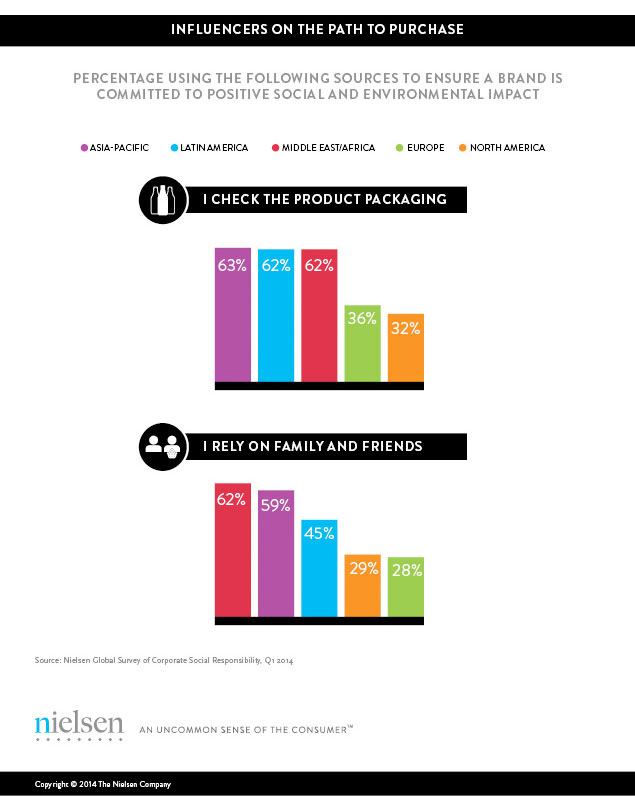Winning at Sustainability–Turning Principles into Action
July 9, 2014
![]() With more people saying they’re willing to pay more for products and services from socially responsible companies, how can companies communicate that they’re on the same page? The most direct option may be how you’ve been communicating with them for years—at the point of sale. Making your social commitment clearly visible on your product packaging is not only a good way to tout your product’s benefits, but it can also be the difference between a purchase and a pass for many consumers.
With more people saying they’re willing to pay more for products and services from socially responsible companies, how can companies communicate that they’re on the same page? The most direct option may be how you’ve been communicating with them for years—at the point of sale. Making your social commitment clearly visible on your product packaging is not only a good way to tout your product’s benefits, but it can also be the difference between a purchase and a pass for many consumers.
In fact, for more than half of global respondents (52%) in Nielsen’s survey, purchase decisions are partly dependent on the packaging, as these respondents say they check the labeling before buying to ensure the brand is committed to positive social and environmental impact. Sustainable purchase considerations are most influenced by the packaging in Asia-Pacific (63%), Latin America (62%) and Middle East/Africa (62%) and to a lesser extent in Europe (36%) and North America (32%).
Family and friends also have the power to influence our sustainable purchase decisions. Globally, 47 percent rely on social circles before choosing a brand to ensure that it has eco-friendly attributes or that it contributes to a social good. Respondents in the Middle East/Africa (62%) and Asia-Pacific (59%) are most influenced by family and friends, while those in Latin America (45%), North America (29%) and Europe (28%) don’t rely as much on these sources.

“Companies that are doing well by doing good place an outward, rather than inward, focus on their efforts,” said Amy Fenton, global leader of public development and sustainability, Nielsen. “Strategies need to be built in harmony with consumer expectations and the social drivers that matter most to them and not solely based on what a company thinks it should do.”
To effectively reach consumers that care, companies should consider a five-part approach to succeed at sustainability through brand strategies:
- Vision. Be clear, actionable and global.
- Endorsement. Get adoption and action from senior leadership.
- Strategy. Focus on outward messaging and consistent cause messaging.
- Accountability. Use key performance indicators, internally and externally.
- Measurement. Quantify program outcomes and return on investment consistently across markets.
Opportunities to “go green” or indeed “go social” exist in any category, but you need to understand your brand’s core equity to determine how far you can credibly stretch into the space. The best initiatives are those that appeal to a heterogeneous group of buyers, but a keen focus on your most passionate (and profitable) consumer segments is also vital.
And sustainable practices can’t come at a cost to your business or product quality. While many consumers may perceive sustainable products to cost more, be sure to understand your optimal price point and the impact on volume and profit. Lastly, most consumers are not willing to make efficacy or taste trade-offs as they aspire to go green. Standards for the basic cost of entry in a category cannot be compromised.




























